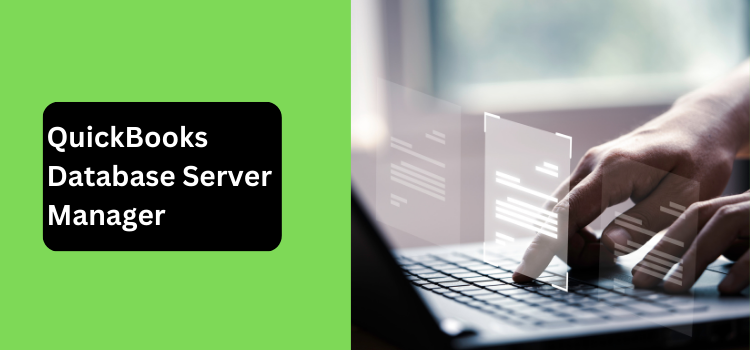
In the realm of accounting software, QuickBooks stands out as a trusted solution for businesses worldwide. However, when multiple users need to access the same company file, things can get complicated. Enter the QuickBooks Database Server Manager 2025—a powerful utility designed to simplify multi-user access, enhance data integrity, and optimize performance.
This comprehensive guide will explore everything you need to know about the QuickBooks Database Server Manager, from its core features to setup instructions, troubleshooting tips, and best practices. Whether you’re a business owner, accountant, or IT professional, this article will equip you with the knowledge to make the most of this essential tool.
QuickBooks Database Server Manager simplifies multi-user access, ensures data integrity, and optimizes performance. Call 1.866.409.5111 for expert assistance.
What is QuickBooks Database Server Manager?
The QuickBooks Database Server Manager is a specialized tool that facilitates multi-user access to QuickBooks company files. It acts as a central hub, managing data requests and ensuring seamless collaboration among team members.
Key Benefits:
- Multi-User Access: Allows multiple users to work on the same company file simultaneously.
- Data Protection: Prevents data corruption and ensures file integrity.
- Improved Performance: Optimizes data handling for faster processing.
- Automatic Updates: Keeps the server in sync with the latest QuickBooks versions.
Why Your Business Needs QuickBooks Database Server Manager
If your business relies on QuickBooks for accounting, the Database Server Manager is a must-have. Here’s why:
- Seamless Collaboration: Enables teams to work together without conflicts.
- Enhanced Security: Protects your financial data from unauthorized access or corruption.
- Scalability: Supports businesses of all sizes, from small startups to large enterprises.
- Efficiency: Reduces downtime and improves overall productivity.
Without the Database Server Manager, you risk encountering issues like data corruption, slow performance, and access errors.
Step-by-Step Guide to Setting Up QuickBooks Database Server Manager
Setting up the QuickBooks Database Server Manager is a straightforward process. Follow these steps:
- Install QuickBooks: Ensure QuickBooks is installed on the server computer.
- Enable Multi-User Mode: Navigate to File > Utilities > Host Multi-User Access in QuickBooks.
- Install Database Server Manager: Download and install the Database Server Manager from the QuickBooks website if it’s not already installed.
- Scan Folders: Open the Database Server Manager and scan the folders containing your company files.
- Verify Setup: Confirm that all users can access the company file without issues.
For step-by-step assistance, call 1.866.409.5111 to connect with a QuickBooks expert.
Troubleshooting Common Issues
Even with proper setup, you may encounter challenges with the QuickBooks Database Server Manager. Here are some common issues and their solutions:
1. Company File Not Found
- Solution: Ensure the company file is stored in a shared folder and the Database Server Manager has scanned the correct directory.
2. Slow Performance
- Solution: Optimize your network and ensure the server computer meets QuickBooks’ system requirements.
3. Connection Errors
- Solution: Check your firewall settings and ensure QuickBooks is allowed through the firewall.
4. Database Server Manager Not Working
- Solution: Reinstall the Database Server Manager or update QuickBooks to the latest version.
If these solutions don’t resolve your issue, contact 1.866.409.5111 for professional assistance.
Best Practices for Using QuickBooks Database Server Manager
To maximize the efficiency of the QuickBooks Database Server Manager, follow these best practices:
- Regular Backups: Always back up your company file to prevent data loss.
- Update Software: Keep QuickBooks and the Database Server Manager updated.
- Monitor Network Health: Ensure your network is stable and fast.
- Use a Dedicated Server: For large businesses, consider using a dedicated server for QuickBooks.
Frequently Asked Questions (FAQs)
Q1: Can I use QuickBooks Database Server Manager on a non-server computer?
Yes, but it’s recommended to use a dedicated server for optimal performance.
Q2: How do I update the Database Server Manager?
The Database Server Manager updates automatically with QuickBooks. Ensure you have the latest version of QuickBooks installed.
Q3: What should I do if the Database Server Manager crashes?
Restart the server computer and reopen the Database Server Manager. If the issue persists, reinstall the software.
For more FAQs, dial 1.866.409.5111 to connect with a QuickBooks specialist.
Why QuickBooks Database Server Manager is a Game-Changer
The QuickBooks Database Server Manager is more than just a tool—it’s a solution that empowers businesses to work smarter, not harder. By enabling seamless multi-user access, protecting data integrity, and optimizing performance, it ensures your QuickBooks experience is smooth and efficient.
Final Thoughts
Mastering the QuickBooks Database Server Manager is essential for businesses looking to streamline their accounting processes. Whether you’re setting it up for the first time or troubleshooting an issue, this guide has you covered.
For additional support or personalized assistance, don’t hesitate to call 1.866.409.5111. Our team of QuickBooks professionals is ready to help you optimize your QuickBooks experience.
By leveraging the power of the QuickBooks Database Server Manager, you’re not just managing data—you’re setting your business up for success.